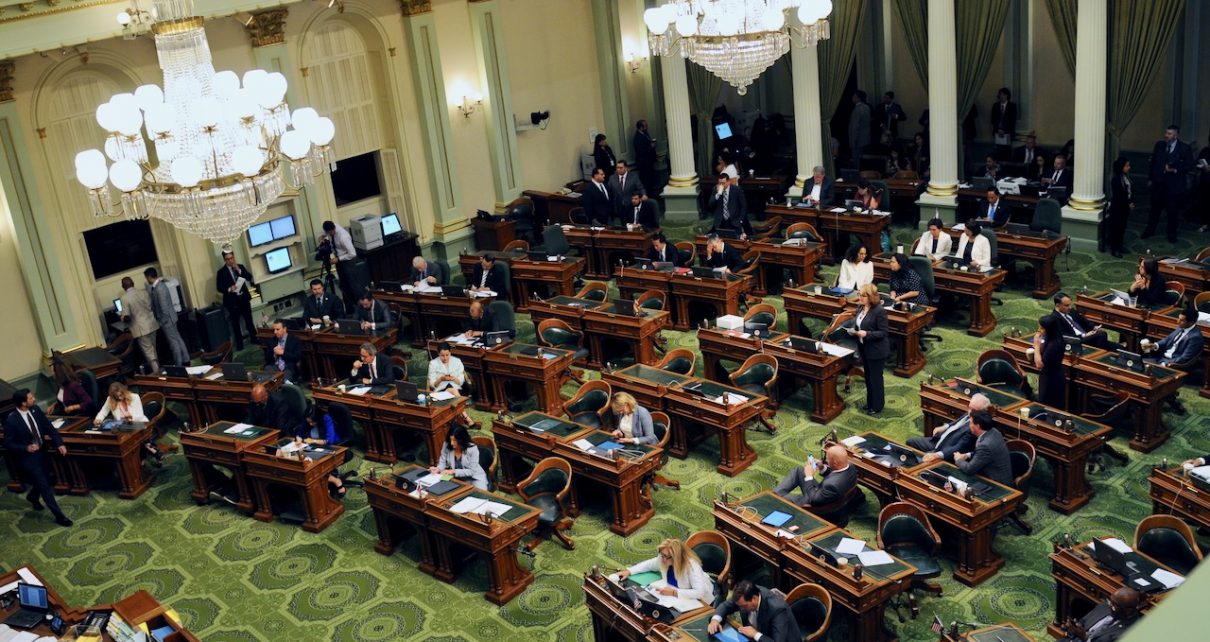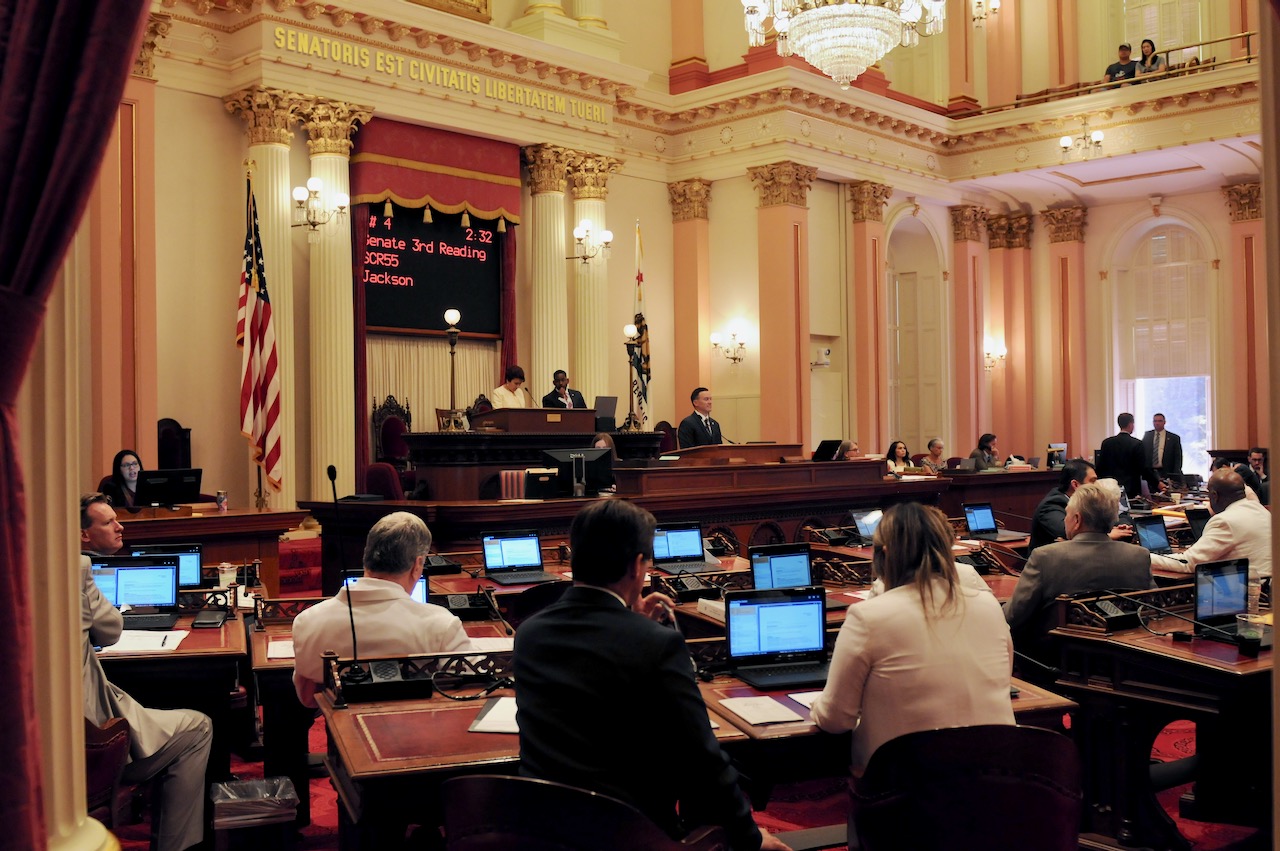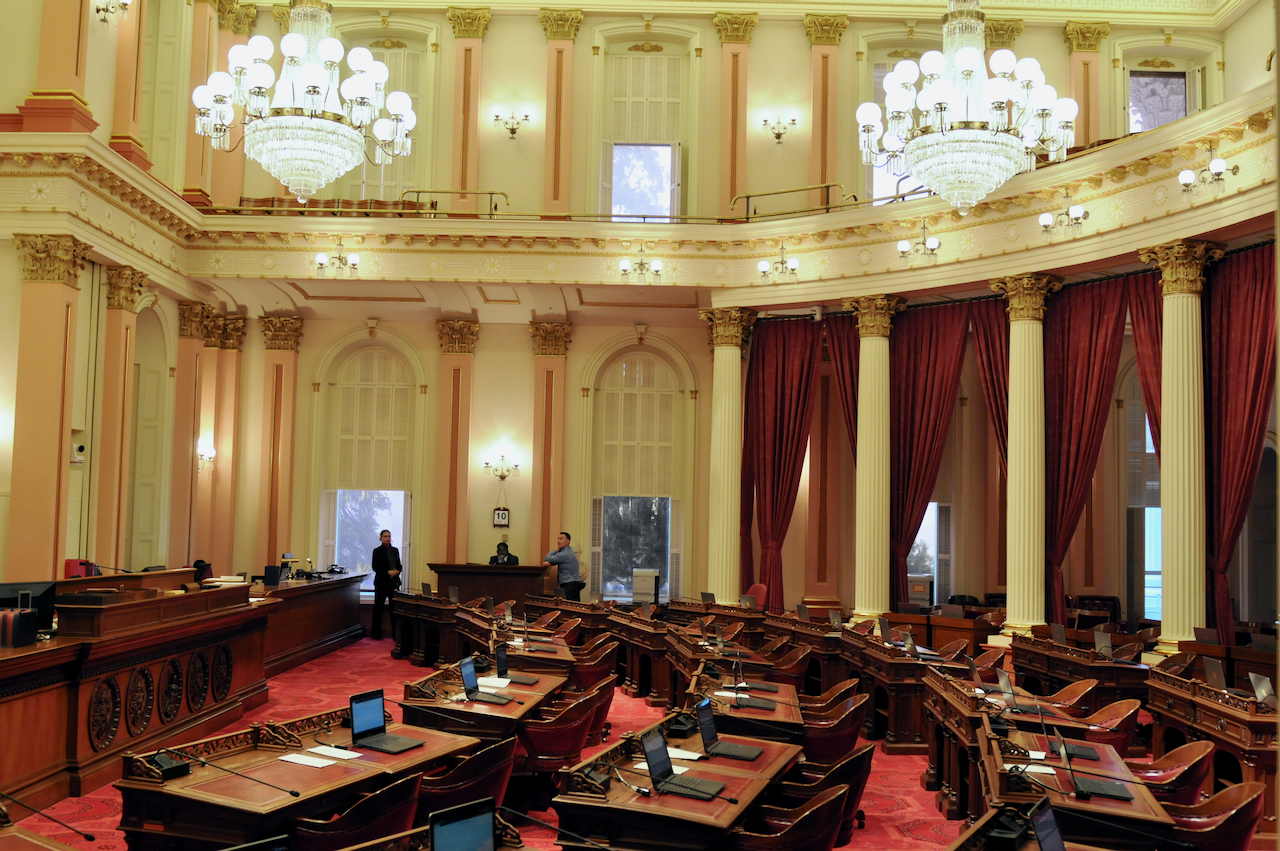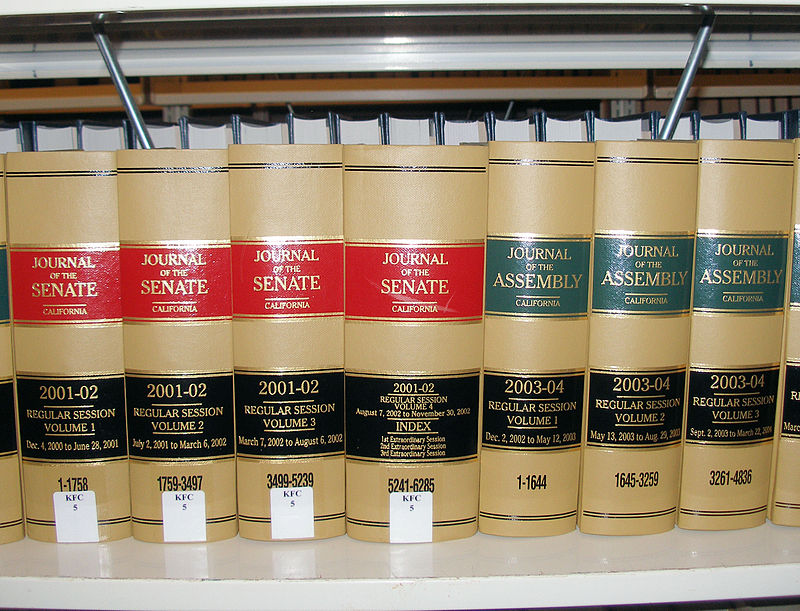
California State Assembly Chamber. (Photo: Kevin Sanders for California Globe)
Sending or Withdrawing Bills from the Floor
There are rules governing these processes in each house
By Chris Micheli, March 13, 2020 2:16 am
In the California Legislature, generally committees deal with legislation before passing measures to the Floor of either the Assembly or Senate. However, there are rare instances where legislators choose to return a bill to committee when it is pending on the Floor, and there are times when legislators desire to pull a bill out of committee and place it on the Floor. There are rules governing these processes in each house.
ASSEMBLY
Pursuant to Assembly Rule 96(a), a legislator can make a motion to withdraw a bill or resolution from committee, or to re-refer a bill or resolution from one committee to another committee, during the regular order of business on the Floor. A motion to re-refer a bill from the Floor to a committee may be debated only as to the propriety of the reference of the bill to committee, and a successful motion requires an affirmative recorded vote of 41 or more Assembly Members.
Under Subdivision (b) of Rule 96, a bill or resolution may not be withdrawn from committee and placed upon the Daily File unless a motion to withdraw has been heard by and has been approved by a majority vote of the Committee on Rules. However, this subdivision does not apply to a bill in a fiscal committee that has been amended so as not to require its reference to a fiscal committee, as indicated by the Legislative Counsel’s Digest.
Moreover, under Assembly Rule 97, a motion to re-refer a bill or resolution that is on the Assembly Daily File to committee may be made during the regular order of business. The motion is debatable only as to the propriety of that bill being referred to committee and the motion requires an affirmative recorded vote of 41 or more Assembly Members to be successful.
SENATE
Pursuant to Senate Rule 28, a bill or resolution may not be withdrawn from committee except upon written notice being first given to the Committee on Rules and the motion to withdraw requires 21 votes of the Senators to be successful.
There is also the provision of Senate Rule 29.2, which provides that a motion to strike any bill, resolution, or other question from the Daily File requires 21 affirmative votes from Senators. That bill, resolution, or other question may not be acted upon again during the session if it has been struck from the Daily File.
These procedural motions are necessary to conduct business in an orderly fashion. They are sometimes used by minority party legislators to force a public vote on a bill that was defeated in a policy committee that they would like to see debated on the Floor. However, those motions are rarely successful. But the rules in each house are available for those instances when a bill needs to get to the Floor in a hurry, or when a bill is appropriately returned to a committee for further or additional review.
- The Division of Property Concerning Retirement Plan Benefits - December 23, 2025
- Enforcement of the UCCJAEA - December 22, 2025
- Declaratory Relief - December 22, 2025




